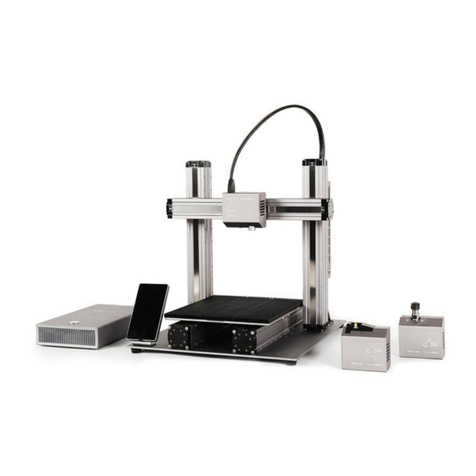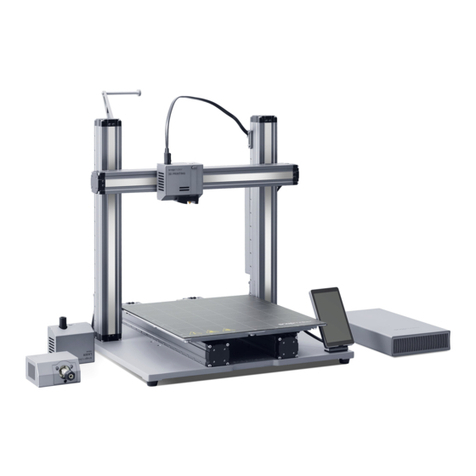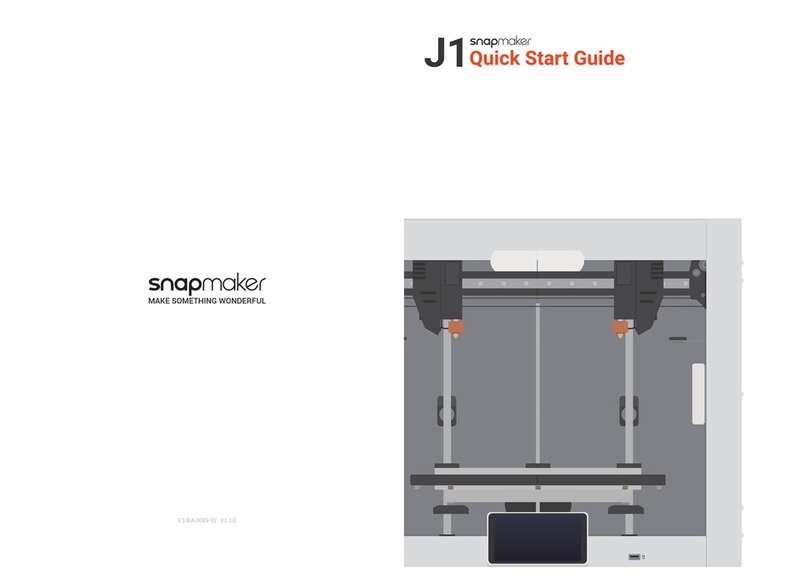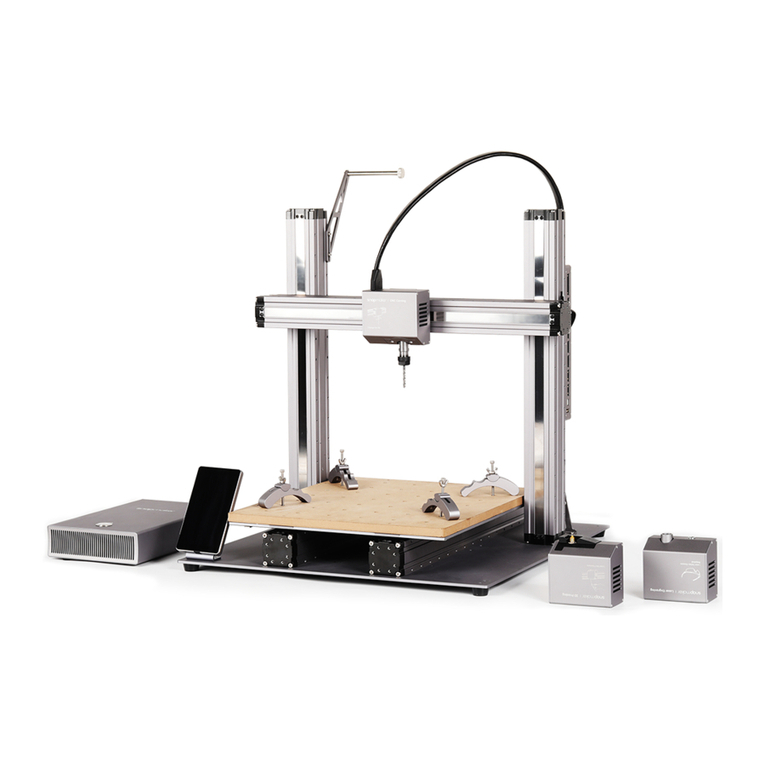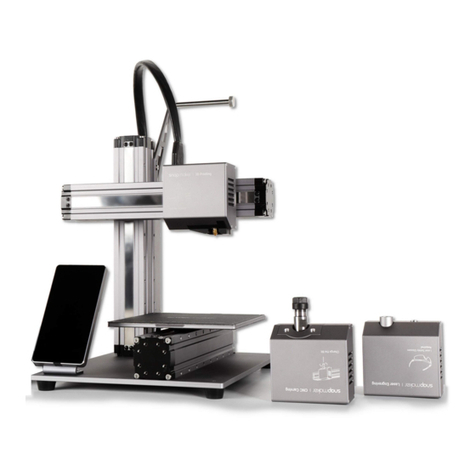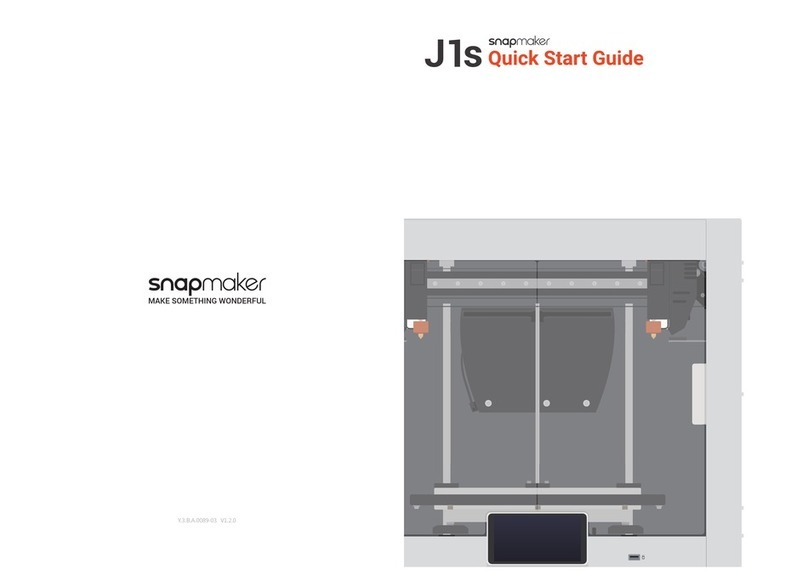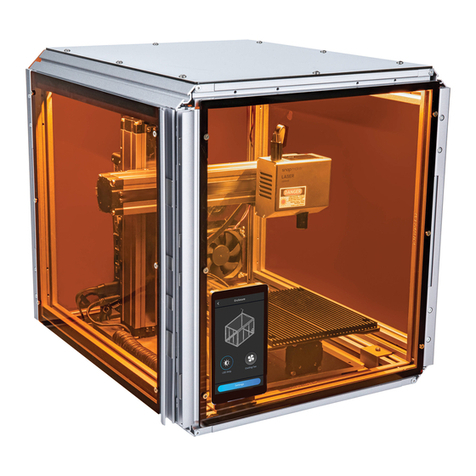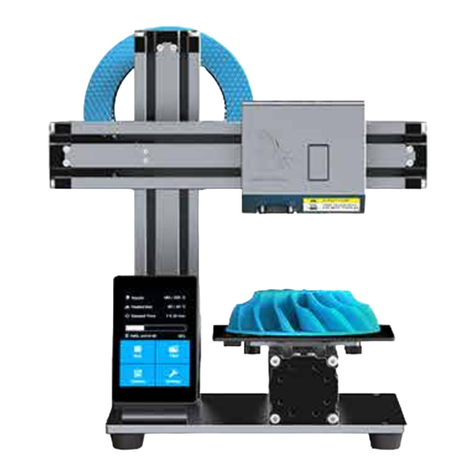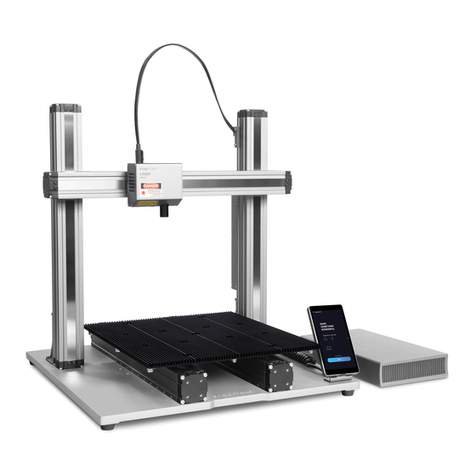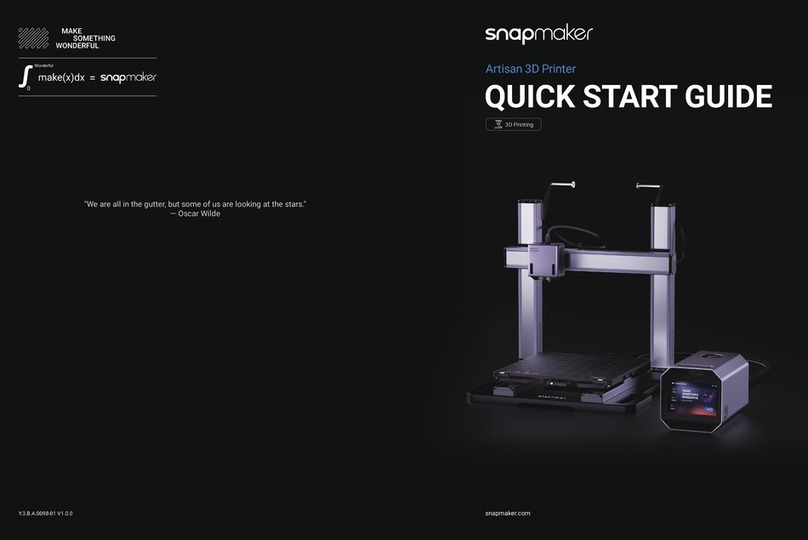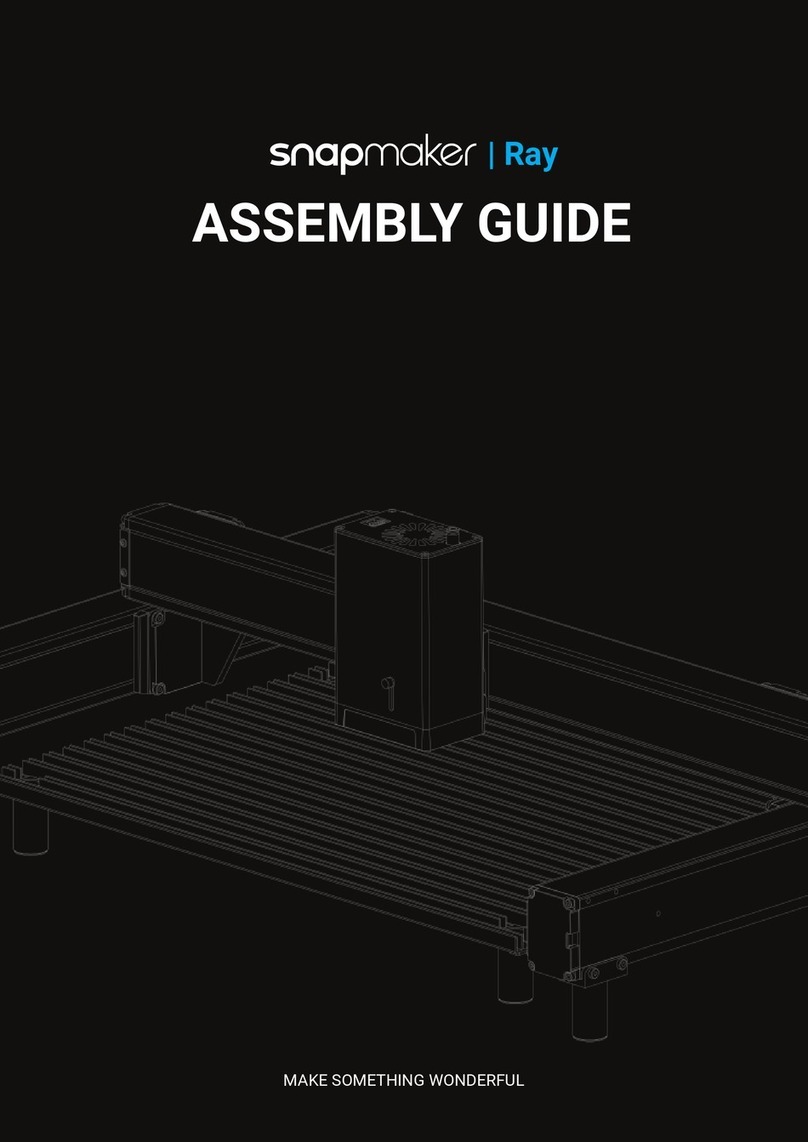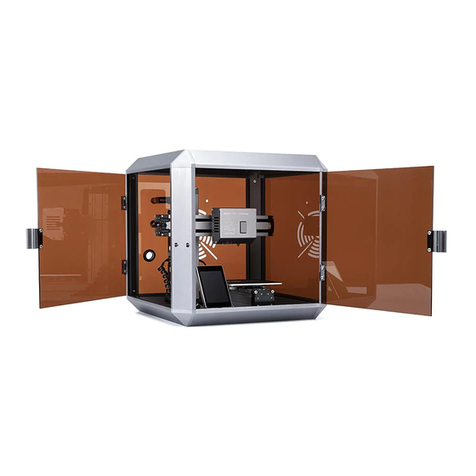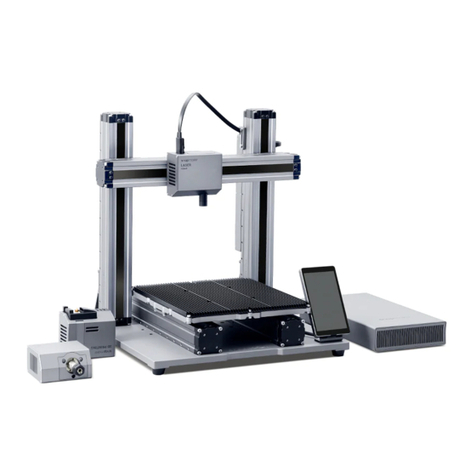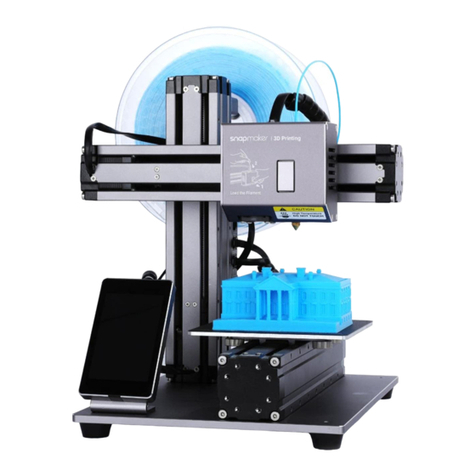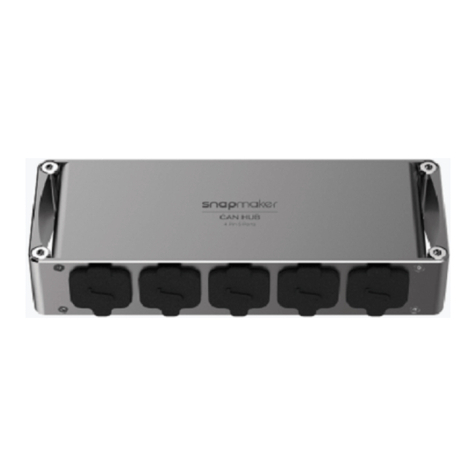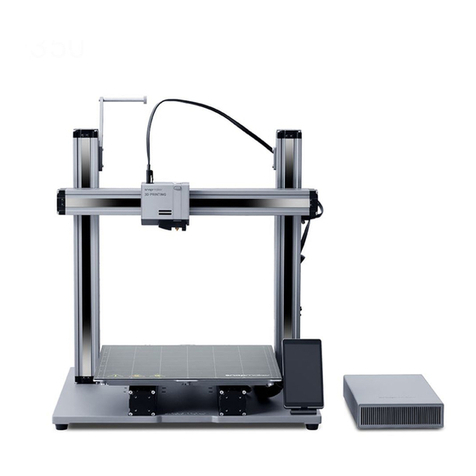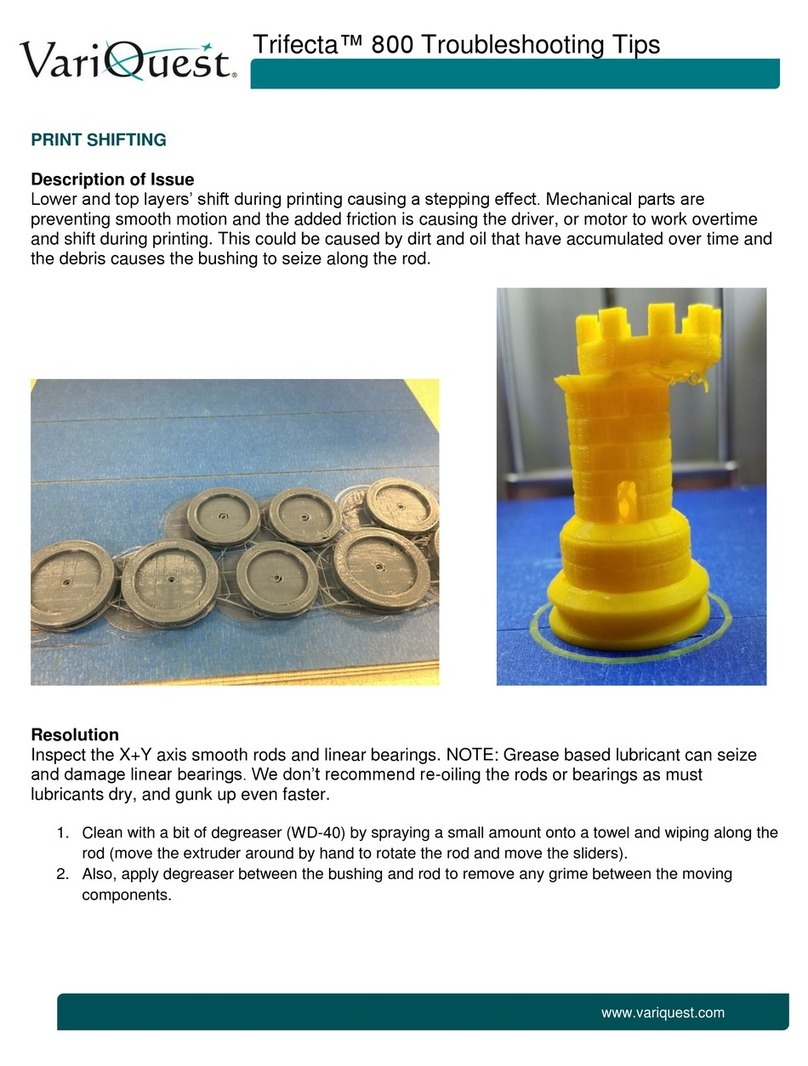
04-05
Before You Start
https://snapmaker.com/
- All the users and bystanders must wear the CNC safety goggles during operation.
- Before a CNC process, make sure to securely clamp the material.
- During a CNC process, never attempt to hold the workpiece with your hands.
- If the bit or workpiece becomes jammed or bogged down, turn off the machine immediately. Wait for all the
moving parts to stop, unplug the cable, and then work to free the jammed material.
- Do not touch the bit or the collet right after use, as doing so could cause burn injuries.
- The toxic substances contained in some materials might be released in CNC carving and cutting processes.
To reduce the harm, use the CNC Module with air purifying devices or in a well-ventilated environment and take
safety precautions, such as wearing a mask.
1.3.4 Enclosure Safety Information
- To move the Enclosure or the machine, you must first separate the machine and the Enclosure.
- Do not scrape, bend or break the acrylic panels, profiles, or the door handle. Doing so can compromise
protection, cause permanent damage to the Enclosure, or even cause personal injuries.
- Do not place the Integrated Controller inside the Enclosure when using this product.
- Do not place objects that weigh more than 7 kg on top of the Enclosure. Otherwise, the top panel will be
damaged.
- Do not put any objects or body parts into the exhaust fan when the fan is operating.
- Keep the cables away from the exhaust fan blades to avoid damaging the exhaust fan or other parts of this
product.
1.3.5 Precautions and Emergency Measures
Laser Engraving and Cutting
Eye Injury from Laser
If your eyes are exposed to direct or scattered laser beams, take the following measures immediately:
1. Grab a nearby thick and opaque object to block the laser beam, preventing further exposure to laser.
2. Shut down the laser engraver and cutter immediately.
3. If an eye injury is suspected, a medical examination by a qualified specialist needs to be carried out as soon
as possible.
4. If an eye injury is apparent, call the local hospital for emergency help.
Skin Injury from Laser
Lasers can harm the skin via photochemical or thermal burns. When you suffer from skin burns caused by
lasers, take the following steps as an emergency response:
1. If it is a major burn, call for emergency medical care before you take the subsequent steps.
2. Remove any clothing or jewellery near the burnt area of skin, but do not move anything that’s stuck to the
skin.
3. Hold the burn under cool or lukewarm running water until the pain subsides. Use cool, wet compresses if
running water isn’t available.
4. After the burnt area has been cooled, use painkillers such as paracetamol or ibuprofen to treat any pain.
5. Use a sterile, non-adhesive bandage or clean cloth to loosely bandage the burn.
Exposure to Gases or Fumes
The heating which occurs during laser cutting or engraving can cause charring, pyrolysis, or even combustion
of the material being worked on and generate gases or fumes.
- Airway Irritation
Gases and fumes may irritate the airways and potentially be extremely dangerous. If airway irritation occurs,
take the following steps as an emergency response:
1. Expose the casualty to fresh air.
2. Call for medical help.
3. If the person is unresponsive, not breathing, or not breathing normally, perform CPR until the person begins
breathing or emergency help arrives.
- Eye Irritation
Being exposed to gases or fumes may cause the eyes to become red and watery, and induce a grainy feeling.
Should eye irritation occur, take the following steps as an emergency response:
1. Rinse the affected eyes with room temperature water for 10 to 20 minutes to relieve symptoms. Sterile
water or sterile normal saline solution (0.9%) from sealed disposable containers can be used. Press the eyelids
wide open and keep them apart while rinsing.
2. Transfer the casualty to the hospital as soon as possible for an eye examination and further treatment.
Fire
Laser engraving and cutting can present a significant fire hazard due to the extremely high temperature caused
by the laser beam. If a fire occurs, take the following steps as an emergency response:
1. If the fire is small in size (no larger than a small trash can), you can use an extinguisher to put it out. Before
dousing the flame, remember to cut electrical power.
2. If the fire is large, call for help immediately by pulling the nearest alarm and do not attempt to fight it yourself.
3. Move quickly to the nearest accessible exit. Notify and assist others in evacuating along the way. Do not use
the elevators.
4. Contain the fire and the smoke by closing all doors leading into and surrounding the fire area. Do not lock
them.
5. After a total and immediate evacuation, call medical attention for the casualty.
CNC Carving and Cutting
Injury from Sharp Objects
If you get injured from sharp objects, take the following steps as an emergency response:
1. Apply pressure to the wound with a clean cloth for a few minutes until the bleeding stops. If the bleeding
won’t stop or other tissues are severely injured, seek medical help immediately.
2. Use sterilized tweezers to remove dirt and debris around the wound. If the debris penetrates deep into your
skin, seek medical help immediately.
3. Gently rinse the wound, and wipe away the residual water with a clean cloth.
4. Apply antiseptic cream on the wound to prevent infection. If the wound is infected, seek medical help
immediately.
5. Use a bandage to protect the wound from further exposure to dirt and bacteria.
Any injuries to vulnerable parts, like faces, eyes, and arteries, require immediate medical treatment.
Inhalation of Dirt and Sawdust
CNC carving and cutting produce dust and sawdust, which might irritate your respiratory system. Generally, we
recommend you use air-purifying devices and wear protective masks when carving and cutting. If respiratory
irritation occurs, immediately expose the casualty to fresh air and seek medical help.
Inhalation of Scorched Smell
Sometimes, CNC carving and cutting can emit a scorched smell, which might irritate your respiratory system.
Generally, we recommend you carve and cut with air-purifying devices or in a well-ventilated environment. If
respiratory irritation occurs, immediately expose the casualty to fresh air and seek medical help.
